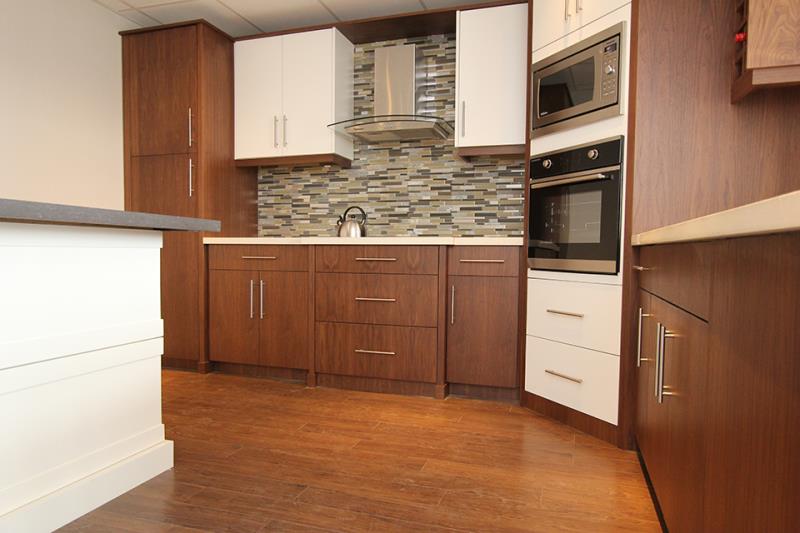
Planning a new kitchen is full of decisions to make, with one of the first ones being deciding between framed and frameless cabinets. Frameless cabinet construction is a style originating from Europe but is quickly growing in popularity in North America. These sleek, smooth fronts are constructed from laminate, glass, or metal and lack face frames.
If you’re considering frameless cabinets in your new kitchen, here’s what you should know.
Frameless cabinets’ simple, contemporary designs are appealing to today’s homeowners. Because they lack a face frame, they offer greater accessibility and are often called “full access cabinetry.”
Full overlay doors are used that have hinges attached directly to the sides of the cabinet box. A thicker box construction is used for stability.
Unlike framed cabinets, frameless cabinets lack a centre stile in the middle of the two cabinet doors. This provides more storage space and better access to the items inside.
Their shelves are typically adjustable, and their drawers are usually larger due to not having space taken up by a face frame. Shelves are easier to mount since you can slide them directly into the open cabinets. The lack of a face frame makes it easier to store kitchen appliances, including food processors, juicers, and bread machines.
If open-shelving is desired, the doors can be omitted entirely to allow for this easily.
For homeowners looking for an elegant look in their kitchen, frameless cabinets’ modern, smooth look is a huge advantage. The edges and drawers are almost flush, and choosing slab doors makes the seamless look complete. Unfortunately, this look is impossible to achieve with framed cabinets since frames are always visible.
One of the significant downfalls of frameless cabinets is the limited options in sizes and modifications. Only one overlay style is available – the full overlay. This type of overlay completely covers the entire cabinet box, leaving only a 2mm reveal. Due to the lack of a traditional face frame, the standard overlay and inset doors are not an option in frameless cabinets.
The sidewalls in framed cabinets are reinforced with hardwood face frames, making them sturdy. In frameless cabinets, this extra reinforcement is missing, making them less strong. Their hinges – mounted to sidewalls rather than hardwood frames – often require regular adjustments to keep the cabinets looking symmetrical.
Being trendy, they usually cost more than framed cabinets. Economy types may not have as long of a lifespan as framed cabinets, although higher-end frameless cabinets are comparable. The limited options of frameless cabinets may also not suit your kitchen layout.
Both frameless and framed cabinets offer similar quality and durability. In the end, the choice between framed and frameless cabinetry is entirely up to you and your personal preference.
Want to learn more about frameless and framed cabinets? Our Oakville Cabinet Makers can show you firsthand the difference between the two styles. Contact us for a free in-home consultation or to learn more about our cabinet installation services.
*Oakville / Burlington Ontario

